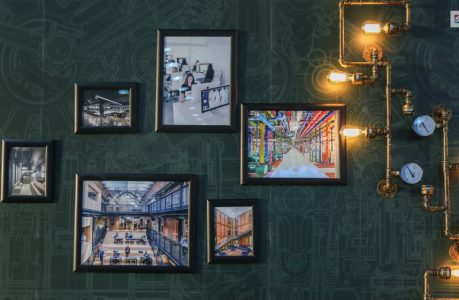How To Leverage Opportunities And Challenges In Commercial Real Estate

A dynamic and multifaceted industry, the commercial real estate sector indeed plays a pivotal role in shaping the modern business landscape. This sector encompasses an array of property types: from office spaces; to retail establishments – even industrial facilities– serving as the foundation for economic activities across various sectors. Delving into this exploration reveals intricacies within commercial real estate that shed light on both its opportunities and challenges defining it as vital.
The Diversity Of Commercial Real Estate
The diversity of commercial real estate, designed to meet businesses’ distinct needs, features various property types in a defining manner. Office spaces – where professionals collaborate; innovate and drive business growth – form the nucleus of corporate activities: they are indeed crucial. Serving as platforms for commerce that connect businesses with consumers–ranging from shopping centers to standalone storefronts–are retail properties. Warehouses and manufacturing facilities, as components of industrial real estate, play a unique role in supporting economic activities and shaping urban/suburban landscapes by facilitating the production and distribution of goods.
The Dynamic Nature Of Office Spaces
Commercial real estate’s cornerstone, office spaces have experienced significant transformations in response to evolving work dynamics and technological advancements. The fixed-desk, 9-to-5 traditional office model has yielded flexible workspaces that accommodate remote work and hot desking while fostering collaborative environments. Companies such as WeWork exemplify the rise of coworking spaces which disrupts the traditional leasing model by offering businesses flexibility and nurturing a professional community spirit.
The concept of smart offices, equipped with advanced technologies like IoT devices, automated systems, and data analytics – is gaining traction; these innovative environments enhance operational efficiency. Furthermore: by optimizing energy usage and resource allocation— they make a significant contribution towards sustainability goals. As businesses adopt hybrid work models–a strategic division of employee time between remote and in-office tasks—it fuels an escalating demand for flexible, technologically advanced office spaces.
Retail Real Estate In The Age Of E-Commerce
Significant shifts in the retail real estate landscape have occurred due to e-commerce prevalence: traditional brick-and-mortar retail spaces are being reevaluated as online shopping rises. Some retailers opt for smaller, experiential stores; others embrace omnichannel strategies–strategies that seamlessly integrate both online and offline shopping experiences. Moreover, consumer expectations for swift and efficient delivery have propelled a surge in demand for last-mile distribution centers; retailers strive to meet these demands.
Certain retail properties, particularly those that offer unique experiences, thrive despite these shifts. Shopping centers–blending retail, dining, and entertainment options–now function as community hubs; they attract consumers who seek more than a mere transactional shopping experience.
In response to evolving consumer preferences: the evolution of retail real estate involves creating engaging multifunctional spaces—catering to diverse lifestyles with customized charm and convenience.
The Industrial Boom
Online retailers’ pursuit of promptly fulfilling orders has driven a surge in demand for strategically located distribution centers, thus igniting an industrial real estate sector boom – particularly within warehousing and logistics due to e-commerce’s exponential growth. Selecting industrial properties now hinges on three crucial factors: proximity to urban centers; efficient transportation networks; and advanced logistics capabilities.
“Just-in-time” logistics, a concept emphasizing precise delivery of goods when needed, intensifies the significance of strategically located warehouses. This trend—combined with automation and robotics advancements—metamorphoses the industrial real estate landscape; businesses now chase state-of-the-art facilities to streamline their supply chains and satisfy an evolving market’s expectations at pace.
Challenges And Opportunities In Commercial Real Estate
Commercial real estate, despite its diverse opportunities, remains susceptible to challenges. Global crises have demonstrated that economic downturns can affect the demand for office spaces, retail properties, and industrial facilities. The COVID-19 pandemic accelerated the transition to remote work: this shift has not only questioned traditional office space’s long-term viability but also prompted leasing strategies’ reevaluation.
The growing dominance of e-commerce giants and evolving consumer behaviors pose challenges to retail real estate. To remain competitive in this sector, businesses must deftly balance physical and digital retail; they should harness technology to bolster customer experiences – a vital strategy amidst an ever-changing landscape.
While the industrial real estate sector indeed undergoes notable growth, it confronts sustainability and environmental impact-related challenges. Local resources strain and contribute to congestion and pollution due to the construction of large distribution centers. The industry grapples with a complex challenge: balancing efficient logistics needs against environmental considerations.
Diverse Course Offerings
Online real estate investment courses cover a wide spectrum of topics, catering to the diverse needs and interests of learners. Whether someone is looking to obtain a real estate license, specialize in commercial real estate, delve into property management, or explore real estate investment strategies, there is a plethora of online courses available. This diversity allows learners to tailor their educational journey to align with their specific career goals and interests, creating a more personalized and enriching learning experience.
Technological Integration And Sustainability Initiatives
The commercial real estate sector increasingly relies on technology and sustainability initiatives to address these challenges. PropTech – also known as property technology – transforms the industry by introducing innovative solutions: virtual property tours, data analytics for market insights, and smart building management systems. These technologies boost not only operational efficiency but also bolster a more sustainable and resilient real estate ecosystem.
Commercial real estate developers, investors, and occupiers now focus on sustainability. They integrate green building certifications, energy-efficient designs, and renewable energy solutions into new developments as integral components. The drive for sustainable practices dovetails with broader societal goals; it reflects awareness of the environmental impact that real estate activities can have.
Conclusion
With its diverse portfolio of office spaces, retail properties, and industrial facilities; commercial real estate – a dynamic force in shaping the modern business environment – persists despite challenges. These include: the impact of technological shifts; changing consumer preferences and their subsequent effects on this sector’s strategies.
Commercial Real Estate has demonstrated resilience through integrating technology, sustainability initiatives–and flexible leasing models–in response to evolving market dynamics. A strategic approach: one that embraces innovation; fosters sustainability–and anticipates the evolving needs of businesses in future years–is necessary to navigate this landscape.
Read Also:

























Leave A Reply